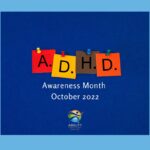Attention Deficit Hyperactivity Disorder (ADHD) is a neurodevelopmental disorder that affects individuals’ ability to focus, control impulses, and regulate energy levels. While it often manifests during childhood, it can persist into adulthood, significantly impacting daily functioning and quality of life. Recognizing the symptoms is crucial for early intervention and management. Let’s delve into the common symptoms of ADHD and what to watch for.
Understanding ADHD
ADHD is characterized by a persistent pattern of inattention, hyperactivity, and impulsivity that interferes with daily functioning and development. While the exact cause is not fully understood, a combination of genetic, environmental, and neurological factors is believed to contribute to its development.
Inattention Symptoms
One of the hallmark symptoms of ADHD is inattention. Individuals with ADHD may struggle to sustain focus on tasks, leading to careless mistakes and incomplete work. Common signs of inattention include:
-
Difficulty Concentrating: Difficulty staying focused on tasks or conversations, often becoming easily distracted by external stimuli.
-
Poor Organization: Difficulty organizing tasks and activities, frequently losing or forgetting essential items.
-
Forgetfulness: Forgetfulness in daily activities, such as forgetting appointments or obligations and frequently misplacing items.
-
Avoidance of Tasks Requiring Sustained Mental Effort: Difficulty engaging in tasks that require prolonged mental effort, such as homework or paperwork.
Hyperactivity Symptoms
Hyperactivity is another critical component of ADHD, although it may manifest differently in children and adults. Hyperactive symptoms include:
-
Excessive Restlessness: Inability to sit still for extended periods, constant fidgeting, or tapping hands or feet.
-
Difficulty Engaging in Quiet Activities: Avoidance of activities that require quiet, such as reading or working quietly.
-
Impulsiveness: Acting without considering consequences, such as yelling out answers or interrupting others.
-
Difficulty Waiting Turns Impatience in waiting situations, often interrupting or intruding on others’ conversations or activities.
Combined Symptoms
Some individuals with ADHD exhibit a combination of inattention and hyperactivity symptoms, known as combined presentation. This can present significant challenges in multiple areas of life, including academic, social, and occupational domains.
Recognizing ADHD in Children
ADHD symptoms often become apparent during early childhood, typically around the age of 7, although they may be noticeable earlier. Parents and caregivers should watch for the following signs:
-
Academic Struggles: Difficulty following instructions, completing assignments, or staying organized in school.
-
Impulsive Behavior: Acting without thinking, such as grabbing toys from others or speaking out of turn.
-
Difficulty Making and Maintaining Friendships: Impulsivity and hyperactivity can interfere with social interactions, leading to peer difficulties.
-
Emotional Dysregulation: Mood swings, irritability, and emotional outbursts are common in children with ADHD.
Recognizing ADHD in Adults
While ADHD is often diagnosed in childhood, many individuals go undiagnosed until adulthood. Adults with ADHD may exhibit different symptoms than children, including:
-
Chronic Procrastination: Difficulty starting or completing tasks, even those that are important or enjoyable.
-
Impaired Time Management: Difficulty estimating time or managing schedules, leading to chronic lateness or missed deadlines.
-
Relationship Challenges: Impulsivity and inattention can strain relationships, leading to misunderstandings and conflicts.
-
Career Implications: Difficulty maintaining employment due to inattention, impulsivity, or difficulty with time management.
Seeking Professional Help
If you suspect that you or someone you know may have ADHD, it’s essential to seek professional evaluation and diagnosis. A qualified healthcare provider, such as a psychiatrist or psychologist, can conduct a comprehensive assessment and develop an appropriate treatment plan.
Treatment Options
Treatment for ADHD often involves a combination of medication, therapy, and lifestyle modifications. Stimulant medications, such as methylphenidate and amphetamines, are commonly prescribed to help improve focus and reduce impulsivity. Behavioral therapy, such as cognitive-behavioral therapy (CBT) or psychoeducation, can also be beneficial in developing coping strategies and improving daily functioning.
Conclusion
Recognizing the common symptoms of ADHD is the first step toward obtaining proper diagnosis and treatment. Whether in children or adults, ADHD can significantly impact daily functioning and quality of life. By understanding the symptoms and seeking professional help when needed, individuals with ADHD can better manage their condition and thrive in various aspects of life.




